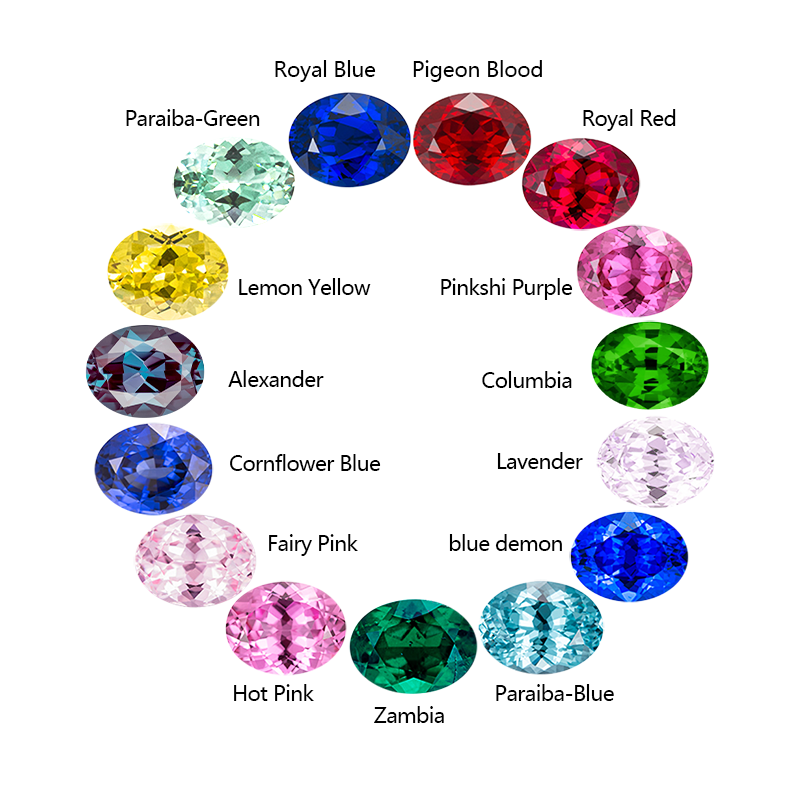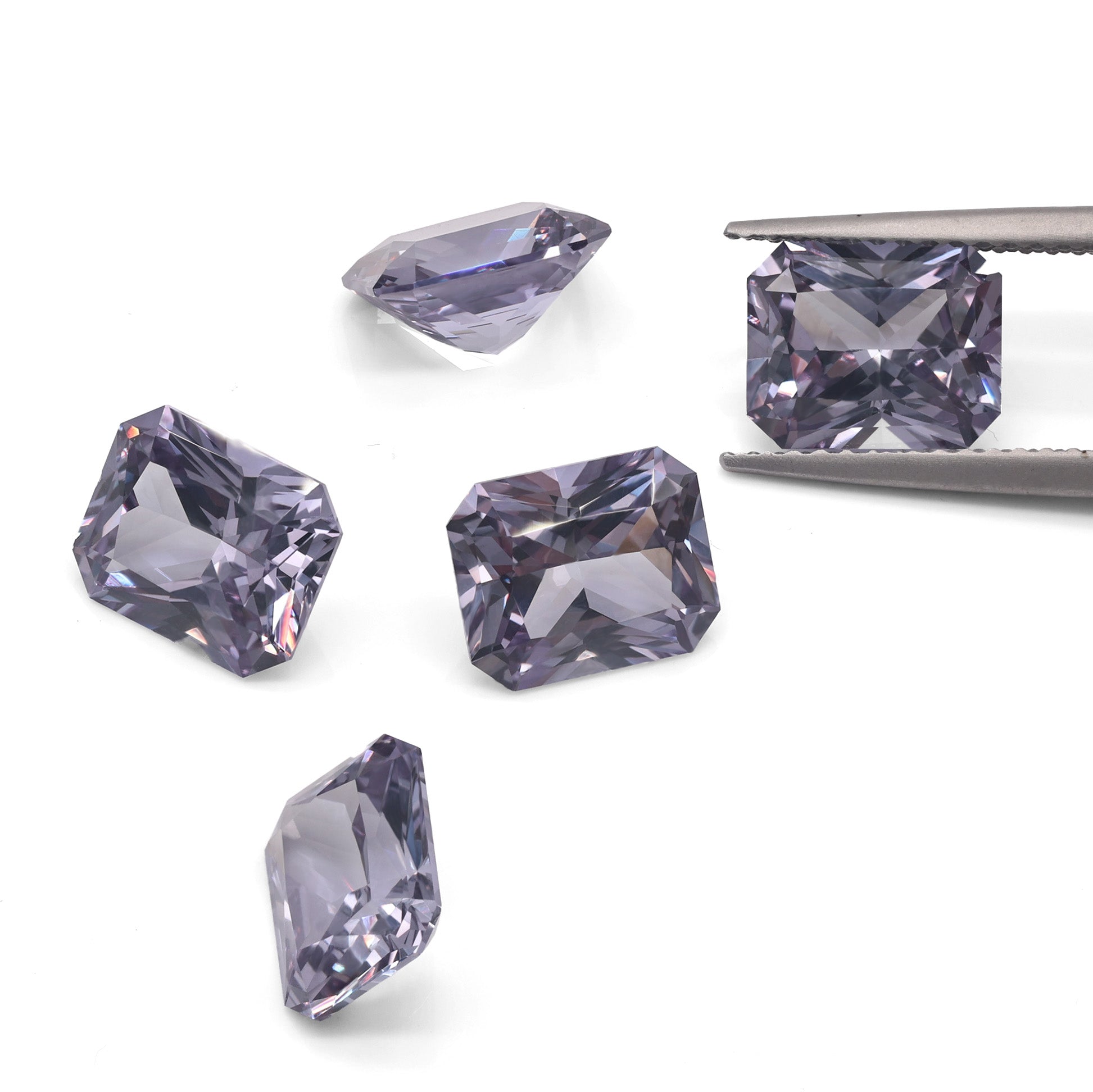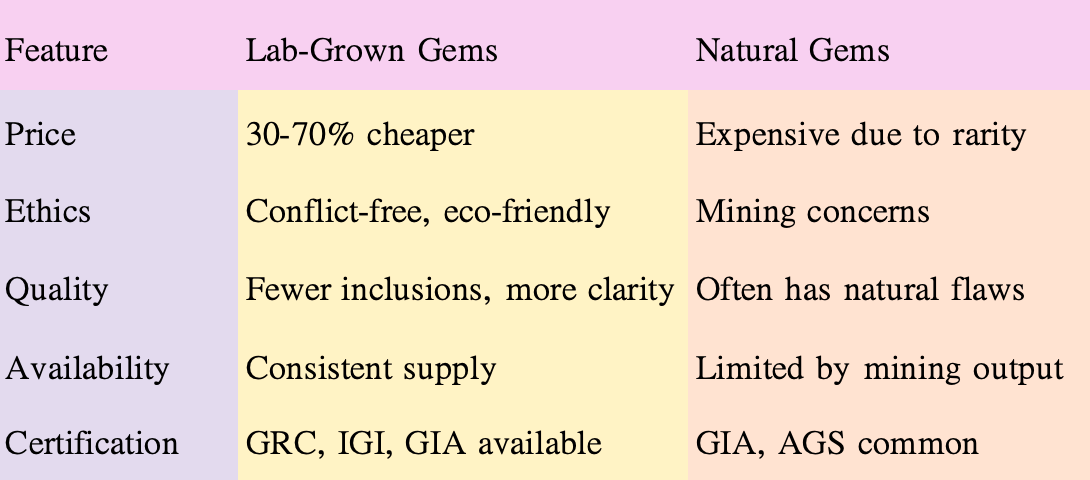Introduction
In recent years, lab-grown gems have gained immense popularity as a sustainable and budget-friendly alternative to natural gemstones.
In this guide, we’ll explore:
1. What lab-grown gems are
2. The different types of lab-grown gemstones
3. Why GEMOISS lab-grown gems are the perfect choice for ethical and affordable jewelry

Lab-grown gems (also called synthetic gems, cultured gems, or man-made gems) are created in controlled laboratory environments using advanced technological processes that replicate the natural conditions under which gemstones form.
The result? Lab-grown gemstones that have the same chemical composition, physical properties, and brilliance as natural gems—but without the environmental and ethical concerns associated with mining.
There are two primary methods for creating lab-grown gemstones:
Both methods produce flawless, high-quality gems that are virtually indistinguishable from natural ones.

Lab-grown gems come in a wide variety, just like natural gemstones. Here are the most popular categories:

l Vibrant red hues without inclusions common in natural rubies.
l Perfect for engagement rings and statement jewelry.

At GEMOISS, we pride ourselves on offering premium-quality lab-grown gemstones with these advantages:
Every GEMOISS lab-grown gem comes with a GRC (Gem Research Center) certificate, verifying its authenticity and quality. This ensures you’re getting a genuine, high-grade gemstone with no hidden flaws.
For moissanite, we also have the corresponding GRA certificate to ensure the quality of the moissanite you get.
Similarly, our laboratory diamonds will also have IGI certificates to ensure that the source is reliable and the quality is superior.
Since lab-grown gems skip the expensive mining process, they are far more affordable than natural stones. At GEMOISS, you can get a larger, more brilliant gem for the same price as a smaller natural one.
Mining natural gemstones often involves environmental destruction and unethical labor practices. Lab-grown gems eliminate these issues, offering a guilt-free luxury alternative.
Whether you choose a lab-grown diamond, sapphire, or ruby, you’ll enjoy the same sparkle, hardness, and longevity as a natural gem—just without the premium price tag.

Since lab-grown gems have the same properties as natural ones, they require similar care:
With proper care, your GEMOISS lab-grown gemstone will last a lifetime!
Lab-grown gemstones provide an affordable, ethical, and stunning alternative to natural gems. Whether you’re looking for a lab-grown diamond engagement ring, a sapphire pendant, or a ruby bracelet, GEMOISS offers GRC-certified, high-quality gems at unbeatable prices.
Why pay more for mined gemstones when you can get the same beauty for less? Explore GEMOISS’s collection of lab-grown gems today and make a smart, sustainable choice!